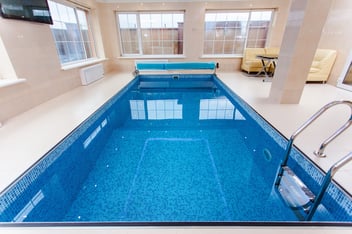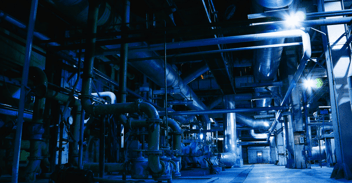We should remember that a Plate Heat Exchanger is a technological element within a refrigeration system that performs a thermal exchange between two fluids through a set of metallic plates aligned with each other.
While one fluid gains heat, the other one loses it. The fluids can be of the most diverse types, from water to gases and their temperature exchange is done by traveling through the plates.
The fluids are never in contact except through the separation within the plates.
As you know, plate heat exchange technology performs the following functions:
- Heat a cold fluid through a fluid with higher temperature.
- Reduce the temperature of a fluid through a fluid with a lower temperature.
- Bring a fluid to the boiling point through a fluid with higher temperature.
- Condensing a fluid to gaseous state through a cold fluid.
%2015.32.46.png?width=600&name=Captura%20de%20pantalla%202018-06-19%20a%20la(s)%2015.32.46.png)
Important classifications of Heat Exchangers
Despite being used in different industries, Plate Heat Exchangers are classified into two main categories:
- Industrial: for varied industries processes, where a material not vulnerable to contamination is used.
- Sanitation: for processes that require maximum hygiene as is the case of the food industry.
What materials are necessary to build a Heat Exchanger?
Undoubtedly, the most important pieces in the Heat Exchanger are the plates and the gaskets.
The materials of both pieces are fundamental because they are in direct contact with the fluids to be cooled, and they vary according to the project for which they are intended:
PLATES
The following materials are used for plate manufacturing:
- Stainless steel AISI 304 and AISI 316: stainless steel plates are most common and are suitable for almost all fluids. It is the most used standardized material. However, it is sensitive to salt.
- Titanium: titanium plates are used to treat salty fluids such as brine or seawater. This material increases the cost of the Exchangers. Despite this, the material is sensitive to acids.
- Hastelloy: Hastelloy plates are extremely resistant to acids and are used for chlorides including hydrochloric acid.

Due to the large cost difference, it is very important to keep in mind the type of fluid that will be used in the refrigeration project.
GASKETS
The plates of a Heat Exchanger have gaskets that are responsible for directing the fluids through the aligned plates package, so that they allow circulation between each other. If there are no gaskets, the fluids would have contact with each other, which would prevent heat exchange.
The materials used for the gaskets are generally the following:
- Nitrile (NBR): used to perform heat exchanges at temperatures below 100 degrees Cº.
- Ethylene Propylene Diene (EPDM): for temperatures up to 160 degrees Cº, although is not compatible with oils.
- Viton (FPM): it is a material of high price, not standardized that is used for organic solvents, lubricants or sulfuric acid. Most commonly used for the latter.
- Neoprene (CR): likewise, a high-priced material for highly specialized equipment that handle gases such as R22 or ammonia.
What project information do I need to quote the design of a Heat Exchanger?
To make the quotation of the design of an Exchanger, several factors need to be considered, the most important are:
- Properties of the fluids among which thermal exchange will take place.
- Permissible pressure drops: this is a necessary data established by the rest of the refrigeration system. This factor gives us the number of plates necessary for our unit, since more plates are needed at lower pressures.
- Temperatures and flows of the heater/cooler media: the inlet and outlet temperatures, as well as the heating and cooling temperatures that need to be applied. In this way, we refer to flow as the volume of fluid passing through the Exchanger per unit of time.
- Cleaning requirements: the area where it will be installed and the size needs for its maintenance are considered.
When a customer hands over the requirement data for the refrigeration project sometimes that information is incorrect, and this can put at risk the utility of the equipment. For this reason, we emphasize the importance of having a refrigeration expert when performing the necessary calculations to assemble a design appropriate to one’s needs.
An honest and precise calculation of your specific requirements is the key for consolidating a project with maximum efficiency.

Related
Discover more related articles

Humidity control: functions of the industrial dehumidifier
Dehumidification plays a very important role in many industries that require relative humidity control in their cooling processes.
Read more »
Natural refrigerants: What are they and how do they benefit you?
For some years, natural refrigerants have been the medium used in large industrial refrigeration systems within the food and beverage industry for...
Read more »
